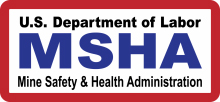Author
Mandatory training contributes to record-low fatalities
Mining deaths have been on a long downward trend. The 28 deaths that occurred in mines in 2015 were an all-time low. A number of factors contribute to this continuous improvement. Conscientious operator implementation of mandatory safety training requirements is significant. There is nothing comparable in general industry. The Federal Mine Safety & Health Act of 1977 introduced training requirements. A Senate report referred to the Scotia coal mine disaster in 1976, in which an initial explosion followed by a second during recovery took 26 lives. Miners claimed they were sent underground to work without being trained – even on how to use their self-rescuer devices. The Senate report also referred to the 1972 Sunshine silver mine fire in which 91 miners died because they were unable to escape carbon dioxide fumes. The report says miners were not adequately trained in secondary escape routes and did not know how to use their self-rescuers. Today, efforts are focused on preventing individual deaths. There have been good results from comprehensive training –… Keep Reading
2015 fatality overview, avoiding injuries in the future
Mining deaths were at a record low in 2015. Twenty-eight people died across the mining industry, with 17 of the deaths occurring in metal and nonmetal mines. The decline reflects advances in safety consciousness, training and regulatory compliance. To further improve, daily awareness of accident potential is essential. A rundown of last year’s fatal accidents, provided below, should enhance miners’ awareness. In 2015, several moving equipment accidents resulted in fatalities. One occurred when an excavator was engulfed while working a sand bank. Another excavator traveled into a water ditch, inundating the cab. Yet another accident involved a loader that was buried during removal of material from a stockpile. Trucks were at the center of four fatal accidents. One involved an articulated haul truck that traveled into a dredge pond. In another instance, a water truck backed over an occupied portable toilet. One fatal accident occurred when the rear of a haul truck slipped in snow and hit the occupied cab of a parked truck. In addition, a tow boom hit… Keep Reading
Protecting yourself from misinterpretations in legal matters
Words follow you – especially words you have written and words written about you. Legal cases are won or lost on words. In today’s world, emails and other writings are readily accessible to anyone who initiates a legal action. This is especially true in Mine Safety and Health Administration (MSHA) matters. Records are essential to all businesses. By law, mines maintain more records than other businesses, including mandated records of workplace examinations, mobile equipment examinations, air contaminants, noise exposure, chemical hazards, miner training, electrical ground checks, accident, injury and illnesses reports, and medical information. In litigation, companies are prohibited from deleting emails and other records, regardless of how the company came into possession. That a document was provided in strict confidence does not protect it from subpoena. (This does not include attorney-client communications or attorney work product.) If a company does not comply with a document demand, a judge will order a response. Emails are important in regulatory matters and lawsuits. In the MSHA world, emails are demanded in investigations… Keep Reading
The role of machine guards
A 12-lb. piece of metal, rotating rapidly in a small lathe, broke loose and killed a machine operator. This was not the first time a piece of metal broke loose, but it was the first incident that caused injury. And, in this case, the metal resulted in a fatal blow to the operator’s head. The operator’s company had machine guards on all its lathes. But the company had removed guards from smaller lathes like the one in the accident before this May 2009 accident. The Occupational Safety and Health Administration (OSHA) cited the employer, Loren Cook Co., for violating the guarding standard at 29 CFR 1910.212(a)(1) and assessed penalties totaling $490,000. The regulation states: “One or more methods of machine guarding shall be provided to protect the operator and other employees in the machine area from hazards such as those created by point of operation, ingoing nip points, rotating parts, flying chips and sparks. Examples of guarding method are barrier guards, two-hand tripping devices, electronic safety devices, etc.” The company… Keep Reading
The pattern of violations game, continued
The most serious civil sanction under the Federal Mine Safety and Health Act converts regular citations into repeated orders to withdraw miners – potentially for the life of the mine. This happens if MSHA declares a pattern of violations (POV). This sanction is so disruptive MSHA did not impose it for 30 years, but MSHA is now enforcing it. Brody Mining was placed under a POV and hit with closure orders for every violation allegedly “of such a nature as could have significantly contributed to the cause and effect of coal or other mine health or safety hazards.” Virtually every operator receives such significant and substantial (S&S) violations, but pattern declarations are not common. S&S citations alone are not enough. There has to be a pattern for POV status. But what is a pattern, and how can a company defend? Brody contested 54 S&S citations relied on by MSHA to show a pattern. Prior to trial, the number of S&S violations dropped from 54 to 40. (MSHA vacated two and dropped… Keep Reading
Trespassers at mines
Two teenagers swim in an abandoned quarry. A property owner who leases his land to a mine operator enters without authorization to observe operations. Three youngsters wander onto cement plant property and get into a hot clinker pile. Along an ocean shore, strollers climb a pile of dredged sand. The teenagers drown. The lessor curious about mining is killed by a blast. The youngsters are severely burned by the hot clinker. The beach walkers die when the sand pile collapses on them. The swimmers were trespassing. The curious lessor was trespassing. The youngsters were trespassing. The beach walkers were trespassing. Personal consequences A death close to home is an agonizing event. Even if a mine operator has no legal duty to protect a trespasser, this may be little consolation when thinking later of something that would have prevented a death or injury of someone wandering onto mine property. Considering in the abstract the word “trespasser,” we think of a wrongdoer rather than a person. It may be easy not to… Keep Reading
MSHA workplace exams
Has an MSHA inspector talked to you about examining “working places?” Inspectors have been told to explain a policy update and MSHA’s enforcement intentions regarding evaluating operator compliance with workplace examination requirements. MSHA says good examinations prevent accidents. Under workplace examination regulations, operators must designate a competent person to examine the workplace. That person must have the abilities and experience to fully perform the examination duty. In addition, the person must examine “working places” for conditions adverse to safety and health. Such examinations must be made at least once each shift, and prompt action must be initiated to correct adverse conditions. A record of such examinations must be kept for one year, and the record must show who examined what and when. The records must also be provided to inspectors upon request. In addition, examiners must give immediate notice of possible imminent dangers. Everyone must be withdrawn from imminent danger areas. MSHA policy Federal agencies interpret how they will enforce standards. MSHA is now restating what is necessary for effective… Keep Reading
Who’s responsible?
Suppose someone orders a miner to do something the miner says is unsafe. What happens if the miner refuses and is then disciplined or discharged? Perhaps there was neither a safety hazard nor a violation. Or, maybe there was a violation and the person directing the miner knows or should know the order was unlawful. MSHA regularly receives such complaints. There will be questions as to who is responsible for what. MSHA will begin an investigation immediately to determine what infractions may have occurred, and, if so, who is responsible. The Federal Mine Safety and Health Act makes “operators” responsible for compliance. An operator is an owner or lessee, “or other person who operates, controls or supervises” a mine. “Other person” could be an individual, a corporation or another business entity. By law, independent contractors at mines are also operators. In rare instances, successors to operators may bear responsibility, possibly due to insolvency of the predecessor. Not limited to operators The Federal Mine Safety and Health Act does not exclusively… Keep Reading
Safety and morale
Mine operators rarely express appreciation for government regulation. Over the years, though, proactive management of mine safety and health, as well as related compliance with Mine Safety and Health Administration (MSHA) requirements, has increased dramatically. MSHA safety and health standards are inextricably part of safety programs at every mine – even small mines without formal programs. Mine operators increasingly recognize that they cannot simply tell employees to be safe and then expect injuries not to occur. All mine personnel – managers, supervisors and hourly employees – are prone to unsafe acts. The same thinking that prompts safety compromises, such as texting while driving a vehicle, can cause grave injury in the workplace. Compliance with safety requirements, on the other hand, can avoid grave injury. Serious accidents happen most often when a person is in an unsafe position. Examples are a truck driver exiting a truck where a loader is operating; a person behind equipment with a malfunctioning backup alarm; a miner working at height without fall protection or a suitable… Keep Reading











